P1822
Symptom: CHECK ENGINE indicator lamp (MIL) on. The system's emergency operation program has been activated. No output shaft speed (car speed) data from the transmission results in rough shifting and imperfect operation of the lock-up function.
| P1822 |
Output shaft speed sensor, no input to transmission control module
Fault symptom
CHECK ENGINE indicator lamp (MIL) on. The system's emergency operation program has been activated. No output shaft speed (car speed) data from the transmission results in rough shifting and imperfect operation of the lock-up function.Condition
No signal from the inductive sensor even though the car is in motion.Diagnostic help
A transmission output shaft speed reading can be obtained with the diagnostics instrument. Select "READ FUNCTIONS". Select "OUTPUT RPM". Compare the diagnostics instrument reading with that of the speedometer.Check the wiring
Intermittent faults may occur as a result of temporary short circuits and breaks in the wiring. Jiggle the leads at several places and in different directions to reveal any faults in the wiring harness, including connectors. Observe the multimeter, test lamp or ISAT scan tool while carrying out this check.Diagnostic procedure
1 Check the input shaft speed sensor's connection to ground
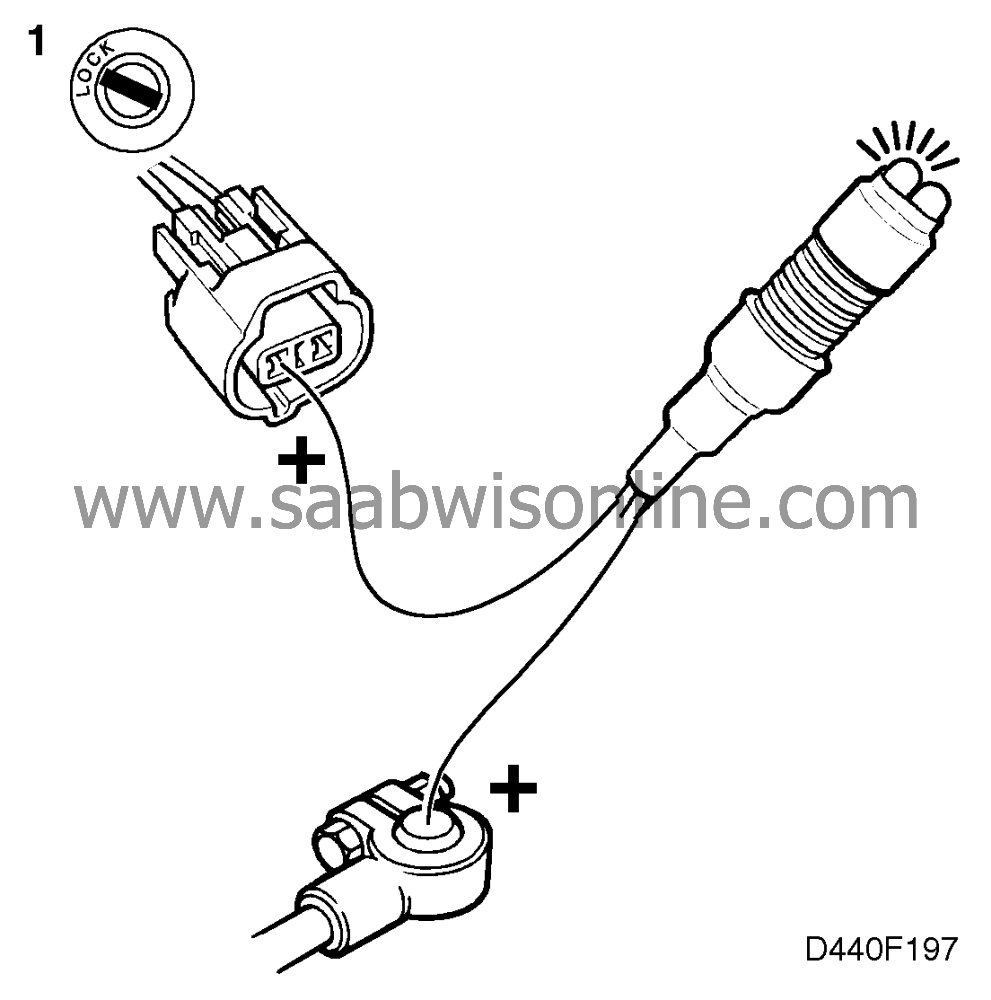
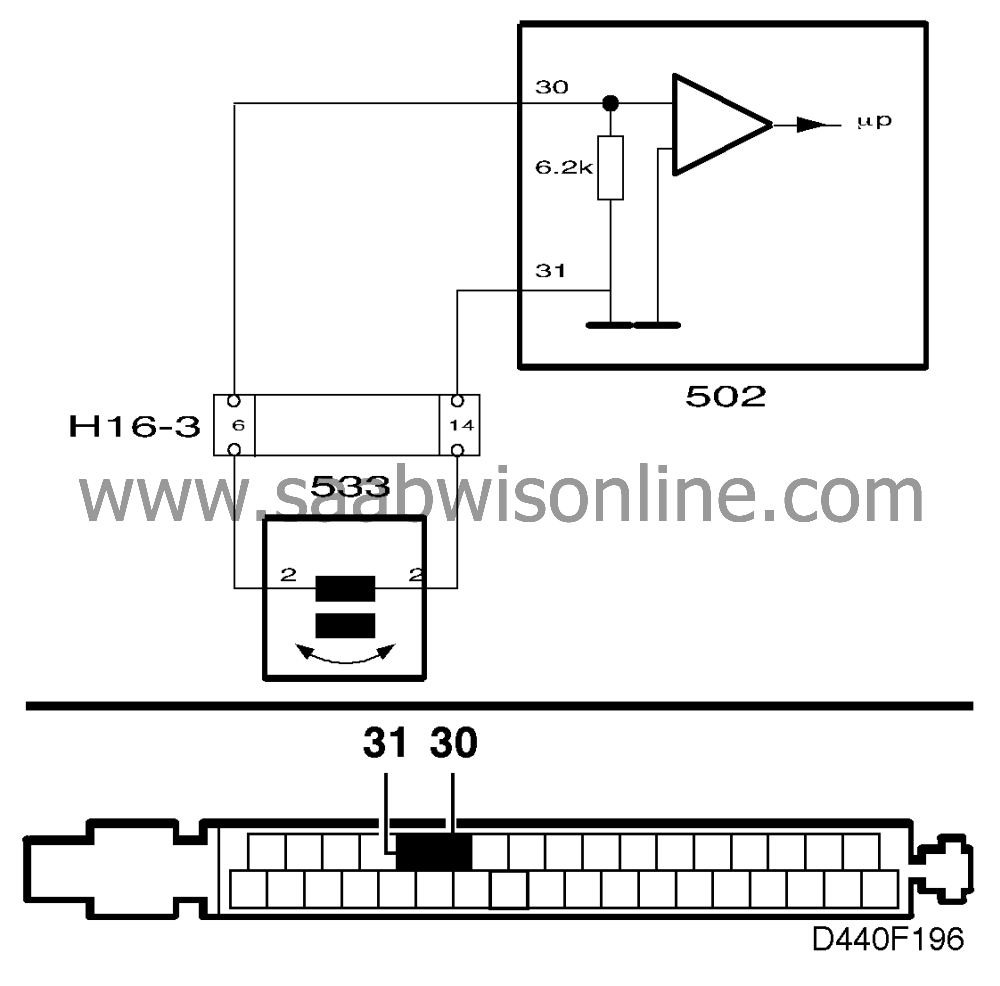
Unplug the output shaft speed sensor's connector (mounted on the transmission) and connect a test lamp to the connector pin with the grey (GY) lead and to battery positive (B+).
Did the lamp light up?
| yes |
Continue with point 3.
| no |
Continue with point 2.
2 Check the input shaft speed sensor's connection to ground (contd.)
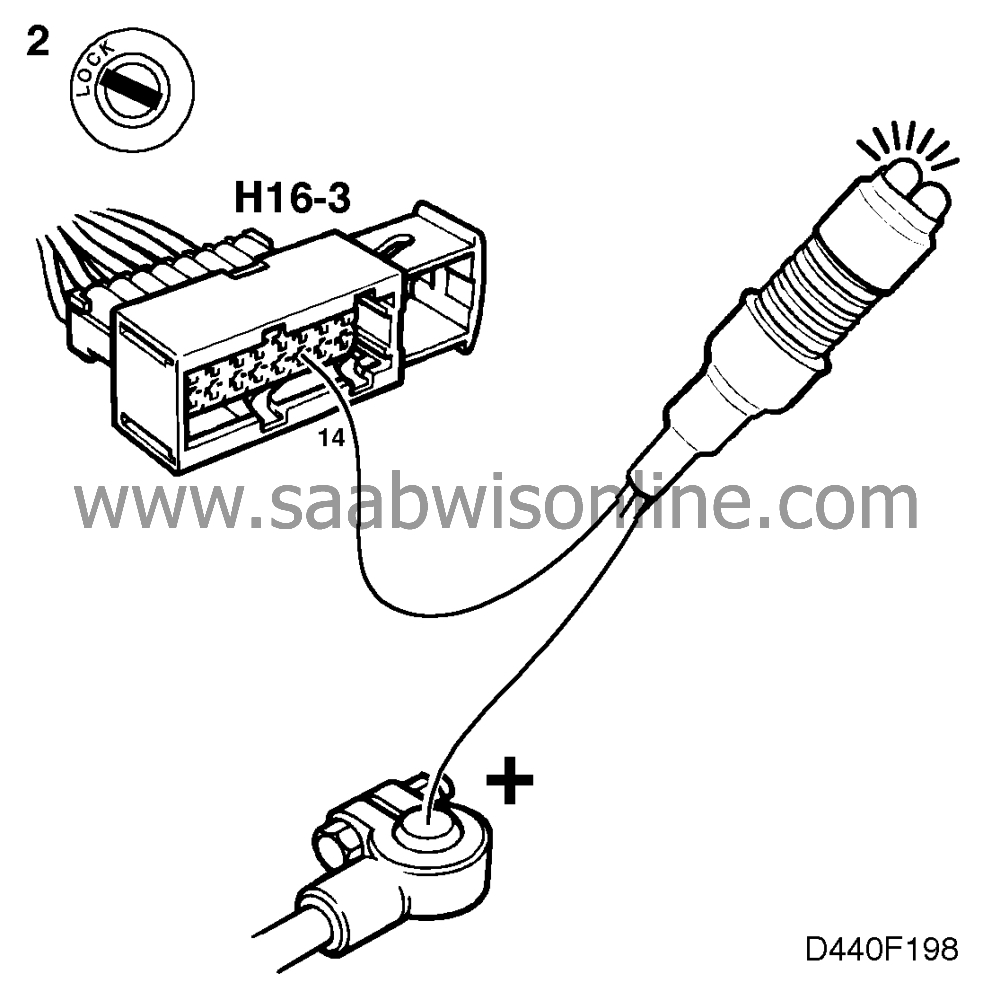
Unplug connector H16-3 (16-pin connector located behind the battery) and connect a test lamp to pin 14 of the female connector and to battery positive (B+).
Did the lamp light up?
| yes |
Repair or replace the wiring (including connectors) between the output shaft speed sensor's connector (the pin with the grey (GY) lead) and pin 14 of female connector H16-3. Then proceed to point 6.
| no |
Check and, if necessary, repair or replace the wiring between pin 14 of female connector H16-3 and pin 31 of the transmission control module. If the wiring is OK, proceed to point 6.
3 Check the transmission control module's signal input

Take a resistance reading across the pins of the connector. The resistance should be about 6.3 Kohms.
Is the resistance correct?
| yes |
Continue with point 5.
| no |
Continue with point 4.
4 Check the transmission control module's signal input (contd.)
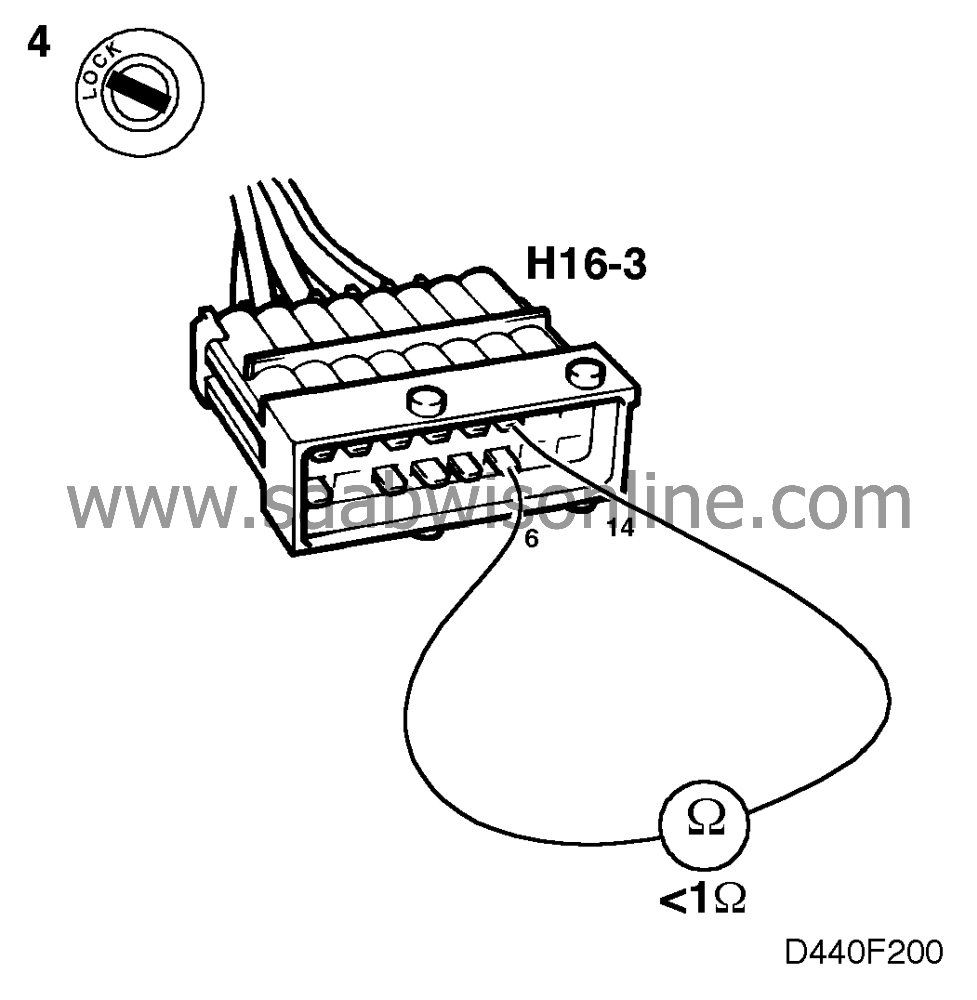
Unplug connector H16-3 (16-pin connector located behind the battery) and take a resistance reading across pins 14 and 6 of the female connector. The resistance should be about 6.3 Kohms.
Is the resistance correct?
| yes |
Repair or replace the wiring (including connectors) between the output shaft speed sensor's connector (pin with yellow (YE) lead - female connector pin marked 21) and pin 6 of female connector H16-3. Proceed to point 6.
| no |
Check and, if necessary, repair or replace the wiring between pin 6 of female connector H16-3 and pin 30 of the transmission control module. If the wiring is OK, proceed to point 6.
5 Check the input shaft speed sensor
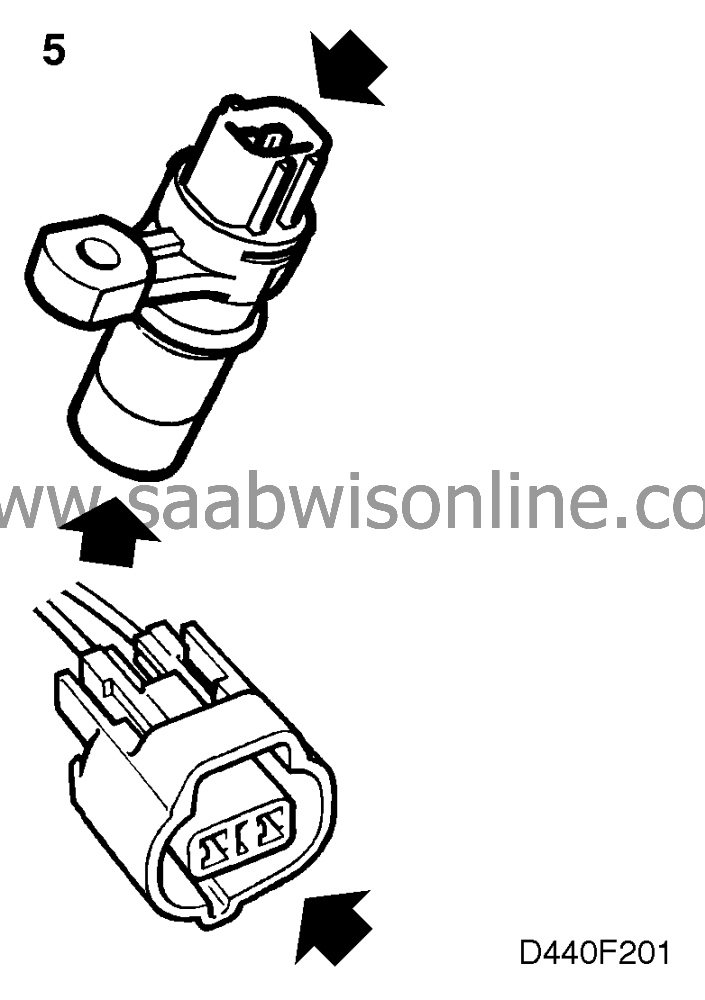
| - |
Check the connector for moisture and corrosion.
|
|
| - |
Check the mounting of the sensor on the transmission.
|
|
| - |
Dismantle the sensor and check that its tip is not soiled by metal filings, shavings, etc.
|
|
Any likely cause of the fault?
| yes |
Clean the connector and brush away any metal shavings, etc. Fit the sensor correctly, see and continue with point 6.
| no |
Change the input shaft speed sensor, see
 , and continue with step 6.
, and continue with step 6.
6 Final check

Clear the diagnostic trouble code, drive the car on test at varying engine loads and speeds for 5 minutes and obtain readouts of any diagnostic trouble codes that are generated.
Does the diagnostic trouble code recur?
| yes |
| no |
The remedial action taken was correct.


